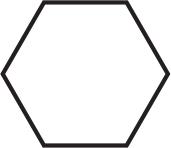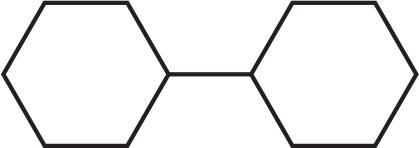Carbohydrate: simplifying a complex topic
This is an excerpt from Nancy Clark's Sports Nutrition Guidebook-6th Edition by Nancy Clark.
In this day and age of high-protein diets (to build muscle) and high-fat ketogenic diets (to lose weight), as well as chatter about training low (with depleted carbohydrate stores), confusion abounds about the role of carbohydrates in a sports diet. I constantly study the research and remain convinced that wholesome forms of carbohydrate are the best choices for both athletes and fitness exercisers for fueling your muscles and promoting good health. In this chapter, I will explain why.
People of all ages and athletic abilities will benefit from nourishing themselves with minimally processed carbohydrate-rich fruits, vegetables, beans, legumes, and whole-grain foods, along with the right balance of protein and healthy fats. But why do some athletes insist they feel better when they stop eating bread, cereal, and pasta? Carolyn, an avid triathlete, raved about how much better she felt after having cut out carbs. I asked, “What were you eating before you made this change?” Her answer indicated the Standard American diet (SAD), with skipped meals, abundant fast foods, and more junk snacks than high-quality meals. No wonder she felt better when she started eating better.
Other reasons for feeling so much better after giving up “carbs” might relate to food sensitivities. When you cut out a lot of foods, you eliminate the one or two items that might create feelings of unwellness. A registered dietitian can help you reach the same level of feeling great by working with you to figure out which foods contribute to the sensitivity.
Some athletes embrace a carb-free diet as a way to curb sugar binges that lead to eating too many carbs. An easier way to reduce carb binges is to prevent extreme hunger. Despite popular belief, carb binges are unlikely caused by being addicted to carbs, but rather caused by the physiological effects of hunger. Refer to chapters 5 (sweet cravings) and 16 (weight management).
The purpose of this chapter is to eliminate this confusion so you can make choices that best promote good health, appropriate weight, and optimal sports performance.
Simple and Complex Carbohydrates
The carbohydrate family includes both simple and complex carbohydrates. The simple carbohydrates are monosaccharides and disaccharides (single- and double-sugar molecules). Glucose, fructose, and galactose are monosaccharides, the simplest sugars, and can be symbolized like this:

The disaccharides can be symbolized like this:

Four common sources of disaccharides are table sugar (sucrose), milk sugar (lactose, a combination of glucose and galactose), corn syrup, and honey.
Table sugar, corn syrup, and honey all contain glucose and fructose but in different amounts.
- Table sugar, upon digestion, breaks apart into 50 percent glucose and 50 percent fructose.
- High-fructose corn syrup (HFCS), commonly used in soft drinks, breaks down to about 55 percent fructose and 45 percent glucose. (HFCS is made using chemical processes that first convert cornstarch to corn syrup and then convert about 55 percent of the glucose in the corn syrup to fructose to make it taste sweeter.)
- Honey contains about 31 percent glucose, 38 percent fructose, 10 percent other sugars, 17 percent water, and 4 percent miscellaneous particles.
Your body eventually converts all monosaccharides and disaccharides to glucose, which travels in the blood (blood glucose) to fuel your muscles and brain.
Fruits and vegetables offer a variety of sugars in differing proportions. Because you absorb different sugars at different rates and by differing pathways, research indicates that consuming a variety of sugars allows for better absorption during exercise. This means that you should read the ingredient label on your sports drink to be sure it offers more than one type of sugar.
Honey has been mistakenly described as being superior to HFCS or refined white sugar. If you prefer honey because of the pleasant taste, fine. But it's not superior in terms of vitamins or performance. Sugar in any form—honey, maple syrup, corn syrup, brown sugar, raw sugar, or agave—offers insignificant nutritional value, and your body digests any type of sugar or carbohydrate into glucose before using it for fuel.
Another type of sugar that is found in many engineered sports foods is maltodextrins, also called glucose polymers. Maltodextrins are chains of about five glucose molecules. Sports drinks sweetened with maltodextrins can provide energy with rapid absorption and less sweetness than regular sugar provides. Sports fuels that use maltodextrins include Hammer Nutrition products.
Complex carbohydrates, such as starch in plant foods and glycogen in muscles, are formed when sugars link together to form long complex chains, similar to a string of hundreds of pearls. They can be symbolized like this:

Plants store extra sugar in the form of starch. For example, corn is sweet when it's young, but it becomes starchy as it gets older. Its extra sugar converts into starch. In contrast to corn and other vegetables, fruits tend to convert starch into sugar as they ripen. A good example is the banana:
- A green banana with some yellow is 80 percent starch and 7 percent sugar.
- A mostly yellow banana is 25 percent starch and 65 percent sugar.
- A spotted and speckled banana is 5 percent starch and 90 percent sugar.
The potatoes, rice, bread, and other starches you eat are digested into glucose and then burned for energy or stored for future use. Humans store extra glucose mostly in the form of muscle glycogen and liver glycogen (but generally not as body fat). This glycogen is readily available for energy during exercise.
Sugars and starches have similar abilities to fuel muscles but different abilities to nourish them with vitamins and minerals:
- The refined carbohydrate in sugary soft drinks provides energy but no vitamins or minerals.
- The highly processed carbohydrate in sports drinks, candies, and gels provides energy but no vitamins or minerals, unless the foods are fortified.
- The natural sugars and unrefined carbohydrate in fruits, vegetables, and whole grains provide energy, vitamins, minerals, fiber, and phytochemicals—the fuel and spark plugs that your body's engine needs to function best.
SHOP

Get the latest insights with regular newsletters, plus periodic product information and special insider offers.
JOIN NOW
Latest Posts
- Authenticity was key to McKinney’s NIL success
- AI—A new tool for sport PR pros
- Essential skills for sport PR practitioners
- Employ these tactics when pitching a story to the media
- How does ergonomic analysis and intervention enhance safety and reduce injury risk?
- Common movement patterns in competitive cycling


